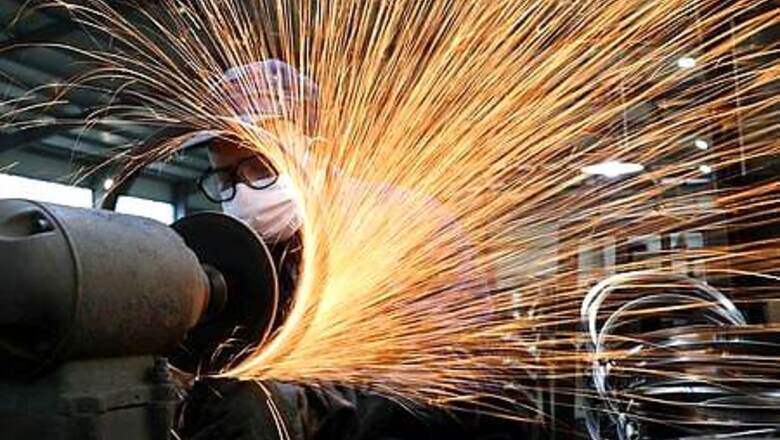
views
BEIJING: China’s factory activity grew at a slower pace in August as floods across southwestern China disrupts production while smaller firms continued to struggle, potentially tempering a robust recovery for the economy from the coronavirus shock.
The official manufacturing Purchasing Manager’s Index (PMI) fell slightly to 51 in August from 51.1 in July, data from the National Bureau of Statistics showed on Monday. It remained above the 50-point mark that separates growth from contraction on a monthly basis.
Analysts had expected it to pick up a touch to 51.2.
China’s vast industrial sector is steadily returning to the levels seen before the pandemic paralysed huge swathes of the economy, as pent-up demand, stimulus-driven infrastructure expansion and surprisingly resilient exports propel a recovery, but the recovery remains uneven.
A sub-index for the activity of small firms stood at 47.7 in August, down from July’s 48.6, with over half of them reporting a lack of market demand and more than 40% of them reporting financial strains, Zhao Qinghe, a senior statistician with the NBS, said in a separate statement.
“In addition, some companies in Chongqing and Sichuan reported an impact from the heavy rains and floods, resulting in a prolonged procurement cycle for raw materials, reduced orders and a pullback in factory production.”
The official PMI, which largely focuses on big and state-owned firms, also showed the sub-index for new export orders stood at 49.1 in August, improving from 48.4 a month earlier and suggesting a bottoming out in the contractionary trend after COVID hit.
Economic indicators ranging from trade to producer prices all suggest a further pick up in the industrial sector. Profits at China’s industrial firms last month grew at the fastest pace since June 2018, official data showed on Thursday.
Investment bank HSBC expects China’s economy would grow by 5.4% in the third quarter from the same period a year ago, followed by a 6.2% expansion in the fourth quarter, returning China’s growth to pre-COVID levels.
But some analysts fear that the recovery could stall, hurt by rising tensions between Washington and Beijing and as another wave of local infections returns in the winter.
The economy, which grew 3.2% in the second quarter year-on-year, is set to expand 2.2% this year – the weakest in over three decades.
A top decision-making body of China’s ruling Communist Party said last month that Beijing will ensure adequate policy support for the economy in the second half.
In the services sector, activity also expanded for the sixth straight month, as authorities lift nationwide COVID-19 restrictions on public gatherings, bolstering consumer demand.
Disclaimer: This post has been auto-published from an agency feed without any modifications to the text and has not been reviewed by an editor



















Comments
0 comment